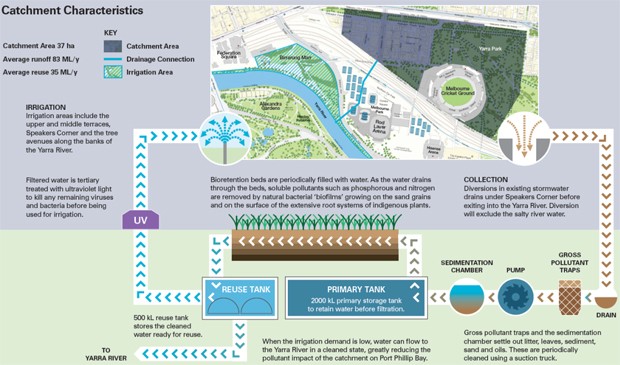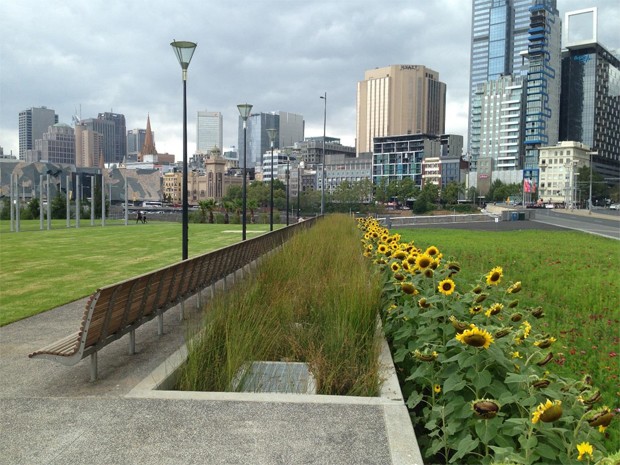A system developed by an Australian company that is helping to transform cities into water catchments is one of 64 Melbourne inventions and innovations from the past 150 years that are being showcased at the 2015 Milan Expo.
Organised by the City of Melbourne in conjunction with Monash University, BlackBOX Design and Innovation is a new exhibition that celebrates defining Melbourne projects and designs that continue to make an impact in many parts of the world today. This includes a Melbourne stormwater harvesting system by Biofilta, which harvests urban stormwater runoff in built up urban centres to produce fit-for-purpose water to irrigate important landscapes in the city.
Selected by the City of Melbourne for its high performance and spatially efficient design, which does not interrupt the flow of streets or the peacefulness of recreational spaces, the Biofilta system has been implemented in a number of large projects, including the Birrarung Marr Park by Cardo, Urban Initiatives and Jones & Whitehead, in collaboration with Melbourne City.

Birrarung Marr Stormwater Harvesting & Landscape Integration Project. Photography by Drew Echberg
The project, which was highly commended at the 2014 Sustainability Awards, uses the system to intercept and divert runoff from 37ha of Melbourne’s CBD, as well as adjacent railway land, to a large storage tank.
The water then goes through a bio-retention filter bed set on the highest ground of the park’s upper terrace, before draining under gravity to a 500kL reuse tank below, where it is stored for irrigation.

“Stormwater is typically a wasted resource in urban environments. Our spatially efficient system captures this resource and allows cities to become mini catchments. Combined with our natural plant based filters, we…produce irrigation water for less than the cost of potable water and help to keep our parks and gardens alive during drought,” says Marc Noyce, co-inventor of the system and Biofilta CEO.
“We are very excited and honoured to be a part of the BlackBOX exhibition.”

The stormwater harvesting system will also help cool the micro-climate associated with cities, says co-inventor Brendan Condon: “This helps cities to combat the urban heat island effect created by our roads and buildings, which is important for liveability and resilience for cities in the face of rising temperatures in a changing climate.”
In addition to the Biofilta system, the BlackBOX exhibition will showcase other famous Melburnian designs, from the Blackbox flight recorder invented by Dr David Warren and the bionic ear that enables hearing for deaf people, through to polymer bank notes, the Sherrin football and even refrigeration.
These products will be laid out in 64 3D printed black boxes in an 8x8 grid format inspired by the Hoddle grid so synonymous with Melbourne’s early town planning, and are expected to contribute to an archive for future analysis and research.
The exhibition will be held in the Sala Colonne studio at Fabbrica del Vapore (the Steam Factory) in Milan until May 15, 2015. There are also subsequent exhibition tours in the works.

